Choosing the best flooring for your bedroom is a decision that can greatly impact your comfort, style, and overall enjoyment of your home. After all, the bedroom is somewhere you seek solace, relaxation, and rejuvenation.
Whether you prefer the warm elegance of hardwood, the plush coziness of carpet, or the low-maintenance convenience of laminate, finding the best flooring option for your bedroom is essential to creating a comfortable space that perfectly reflects your style and meets your practical needs.
So, let's explore the best flooring choices for bedrooms, considering comfort, durability, aesthetics, maintenance, and cost, to ensure you have the best floor for your haven.
What Kind of Floor Is Best for Bedroom?
The best floor for a bedroom depends on various factors such as personal preference, comfort, durability, maintenance, and budget.
Some popular options include hardwood flooring for its timeless beauty, carpet for its cozy and soft feel, laminate flooring for its affordability and versatility, vinyl flooring for its durability and easy maintenance, and tile flooring for its durability and wide range of design options.
Ultimately, the best flooring choice for a bedroom is based on individual needs and preferences. So. lets dive into the popular bedroom flooring ideas and materials to use, together with their pros and cons.
1. Carpeting
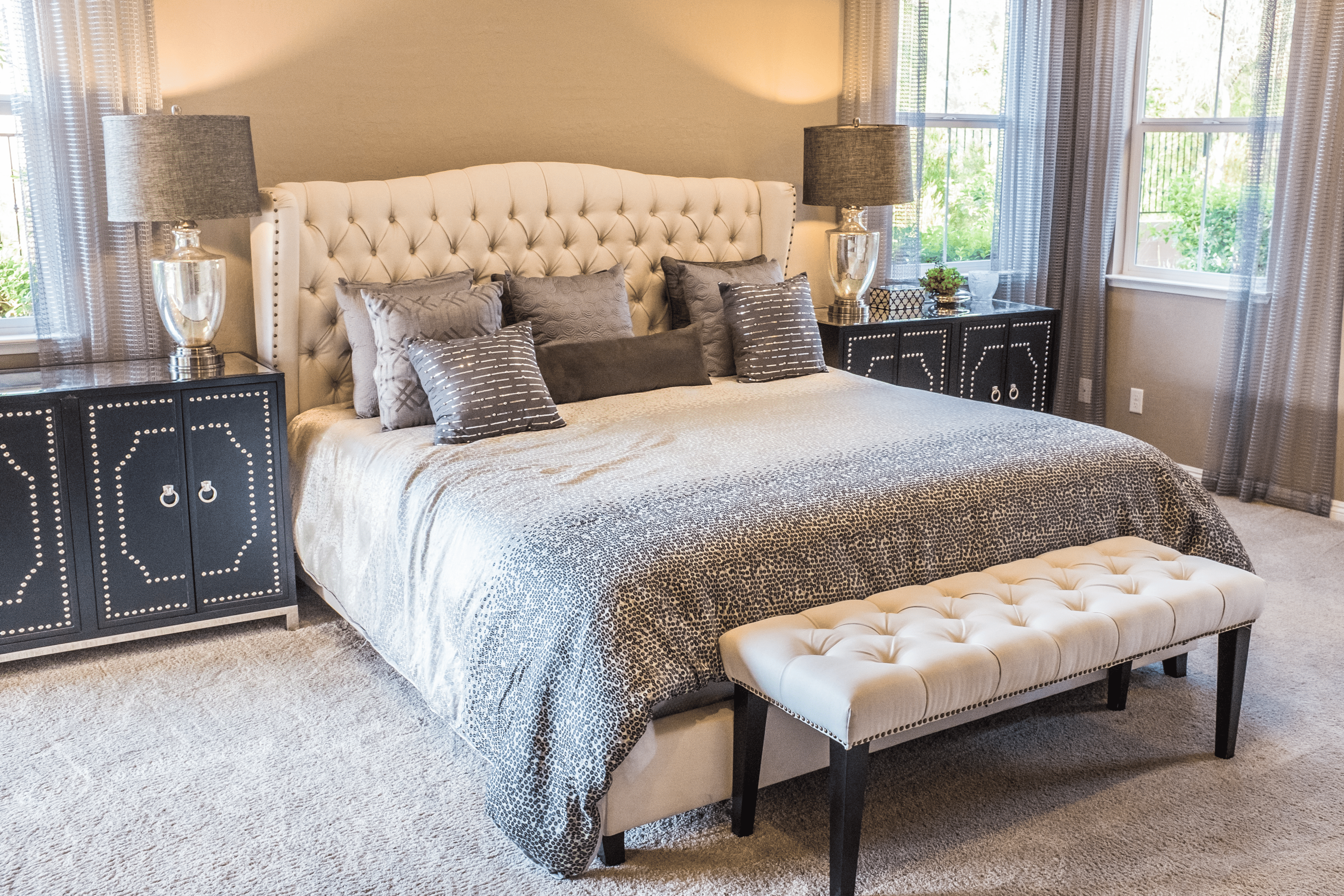
Carpet flooring is a great choice for bedrooms due to its softness, warmth, and ability to create a cozy and inviting atmosphere. Modern carpets for bedrooms offer numerous options for carpet fibers, styles, and designs to suit different preferences and needs.
Types of Carpet Fibers
- Nylon: Nylon is resistant to stains, wear, and fading, making it ideal for high-traffic bedrooms.
- Polyester: Polyester is known for its luxurious feel and vibrant colors. It offers excellent stain resistance and is a more budget-friendly option.
- Wool: Wool is a natural fiber that provides exceptional softness and durability. It is naturally flame-resistant and has excellent insulation properties.
- Olefin (Polypropylene): Olefin is a synthetic fiber resistant to stains, fading, and moisture and has high humidity.
Carpet Styles and Designs
- Cut Pile: Cut pile carpet have its loops cut, resulting in a soft and plush texture.
- Loop Pile: Loop pile carpet has uncut loops, creating a more durable and textured surface.
- Cut and Loop: Cut and loop carpet combines both cuts and looped fibers, creating intricate patterns, textures, and visual interest.
Affordable Carpet for Bedroom Flooring: Smabee Interlocking Carpet
- ✔ 1. Material - The surface is fluffy velvet made of cotton and...
- ✔ 2. Size - Each tile measures 30cm x 30cm x 1cm /11.8 x 11.8"...
- ✔ 3. DIY – Endless Pattern Combination - different colors are...
- ✔ 4. How To Clean - You can use a vacuum cleaner or wash...
- ✔ 5. Mutli prrpose and uses - From covering a floor for...
We recently installed the Smabee Interlocking Carpet in our kids' bedrooms, and it has proven to be an excellent choice. This shaggy, soft EVA foam mat provides a cozy and inviting surface for our children to play and relax on.
The fluffy area rugs not only add warmth and comfort to the room but also serve as protective floor tiles, cushioning accidental falls and providing a safe play area. The interlocking design allows easy installation and customization to perfectly fit the room's dimensions.
Pros:
Cons:
2. Hardwood Flooring
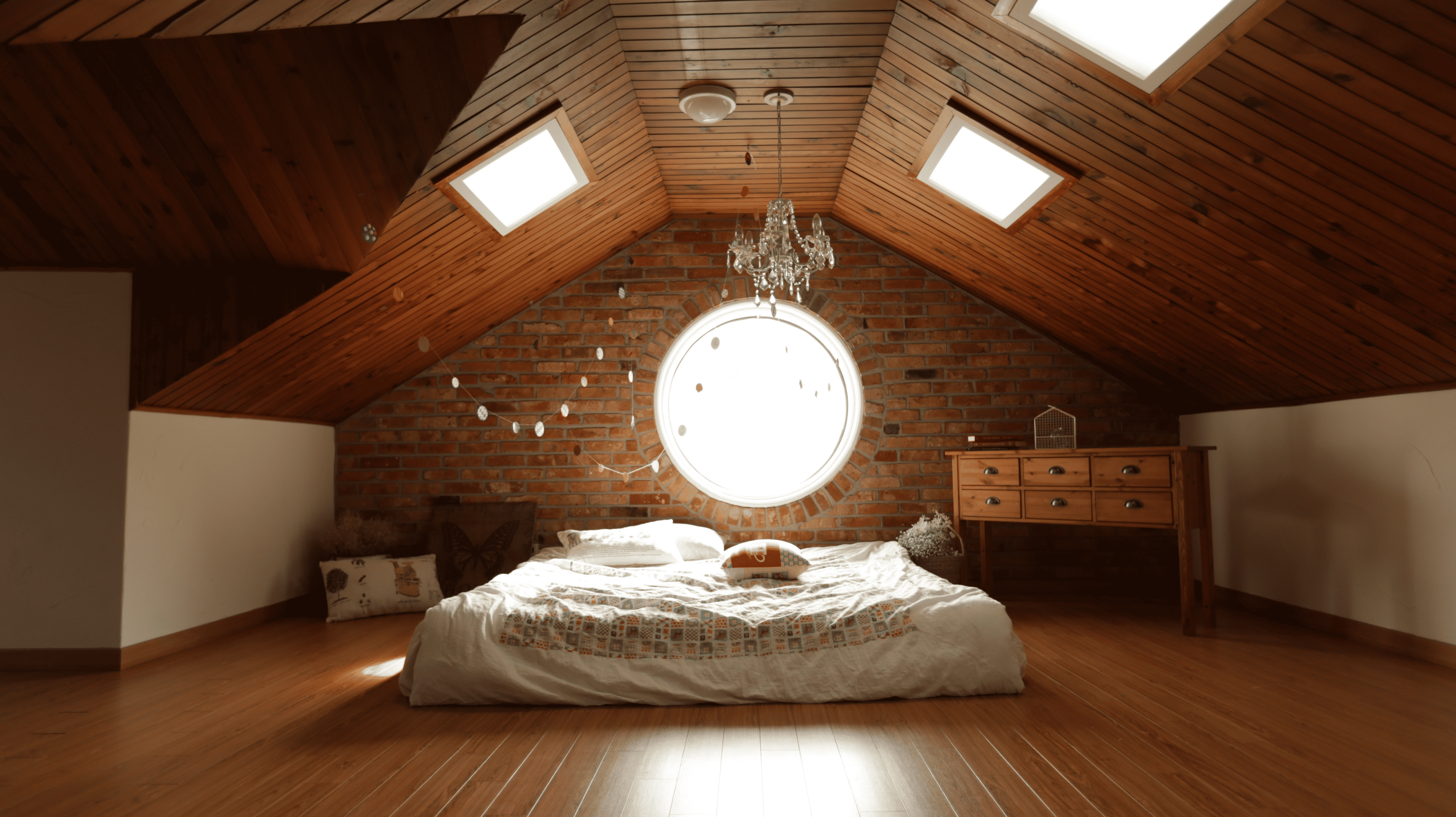
Hardwood flooring is often considered the best flooring option for bedrooms due to its timeless beauty, durability, and versatility. With the best underlayment for hardwood floors, it adds warmth and elegance to any bedroom decor, creating a cozy and inviting atmosphere.
Popular Hardwood Species for Bedrooms
- Oak: Oak comes in various shades, including red and white oak, and offers a classic and traditional look for bedroom flooring.
- Maple: Maple hardwood is known for its durability and light, uniform appearance.
- Cherry: Cherry wood is highly sought after for its rich reddish-brown color that darkens and deepens over time.
- Walnut: Walnut hardwood features a dark, rich color with striking grain patterns.
- Ash: Ash wood is known for its light color and pronounced grain patterns.
Hardwood Floor Styles and Designs
- Plank: Plank consists of long, wide boards that reveal the beauty of the wood and create a sense of spaciousness.
- Parquet: Parquet flooring features geometric patterns created by arranging small wood pieces in intricate designs. It adds visual interest and a unique touch to bedroom floors.
- Engineered Hardwood: Engineered wood flooring consists of a thin layer of real hardwood bonded to layers of high-quality plywood. It offers enhanced stability and resistance to moisture, making it suitable for bedrooms.
Pros:
Cons:
3. Vinyl Flooring
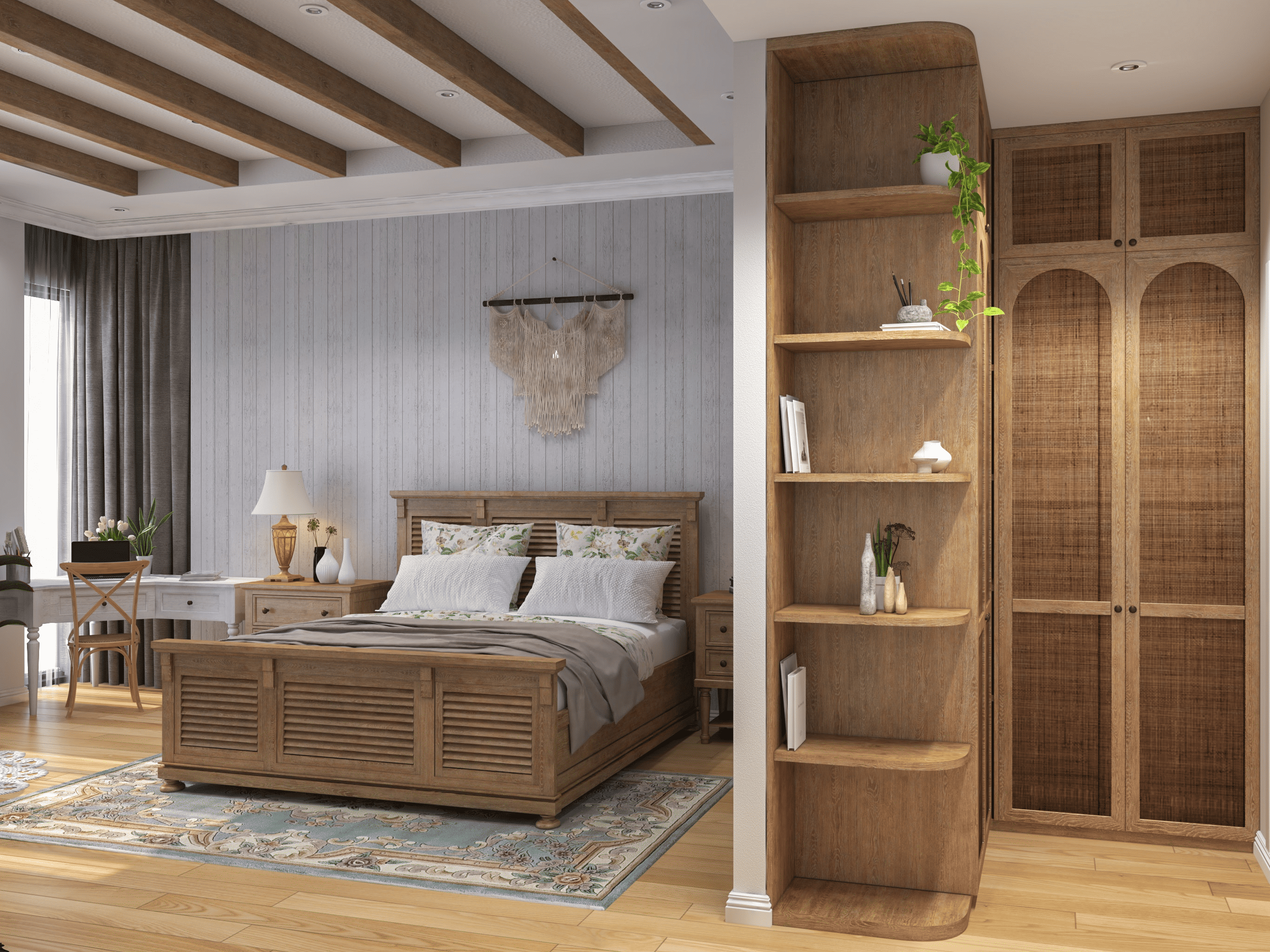
Vinyl flooring is an excellent choice for bedroom flooring due to its numerous advantages. Various types of vinyl flooring are available in the market, each having unique features and benefits.
Types of Vinyl Flooring
- Sheet Vinyl: Sheet vinyl is a single, large roll of flooring material typically installed in one piece. It offers a seamless and waterproof surface for the bedroom floor.
- Vinyl Plank Flooring: Vinyl plank flooring resembles hardwood flooring, featuring long, rectangular planks that can be clicked or glued together. It provides the appearance of real wood with durability and moisture resistance added with a vinyl plank underlayment.
- Vinyl Tile Flooring: Vinyl tile flooring replicates the look of ceramic or stone tiles. It offers the beauty of natural materials without maintenance requirements, making it a practical choice for the bedroom.
Best Vinyl Flooring for DIY Installation: Lucida Surfaces Luxury Vinyl Flooring Tiles-Peel and Stick Floor Tile
- This product contains 5 sample planks. Cut from a full size...
- WOOD-GRAIN TEXTURE Achieve the look and feel of natural wood...
- WATERPROOF & EASY CLEAN Super easy to clean, planks are 100%...
- SCRATCH & ABRASION RESISTANT CoreBond glue binds our multi-layer...
- LUXURY VINYL FLOOR TILES Lucida USA brings Peel & Stick flooring...
We had the opportunity to use Lucida Surfaces Luxury Vinyl Flooring Tiles in our guest bedroom, and we were thoroughly impressed with the results. These peel-and-stick floor tiles made the installation a breeze, perfect for a DIY project. With 36 wood-look planks included, we had more than enough to cover our 54 square feet bedroom.
The Kiln-BaseCore construction ensured durability, making it suitable for high-traffic areas. The vinyl flooring not only looked great but also felt comfortable underfoot, providing a soft and cushioned surface. Maintenance has been a breeze, as it is resistant to stains and easy to clean.
Pros:
Cons:
4. Laminate Flooring
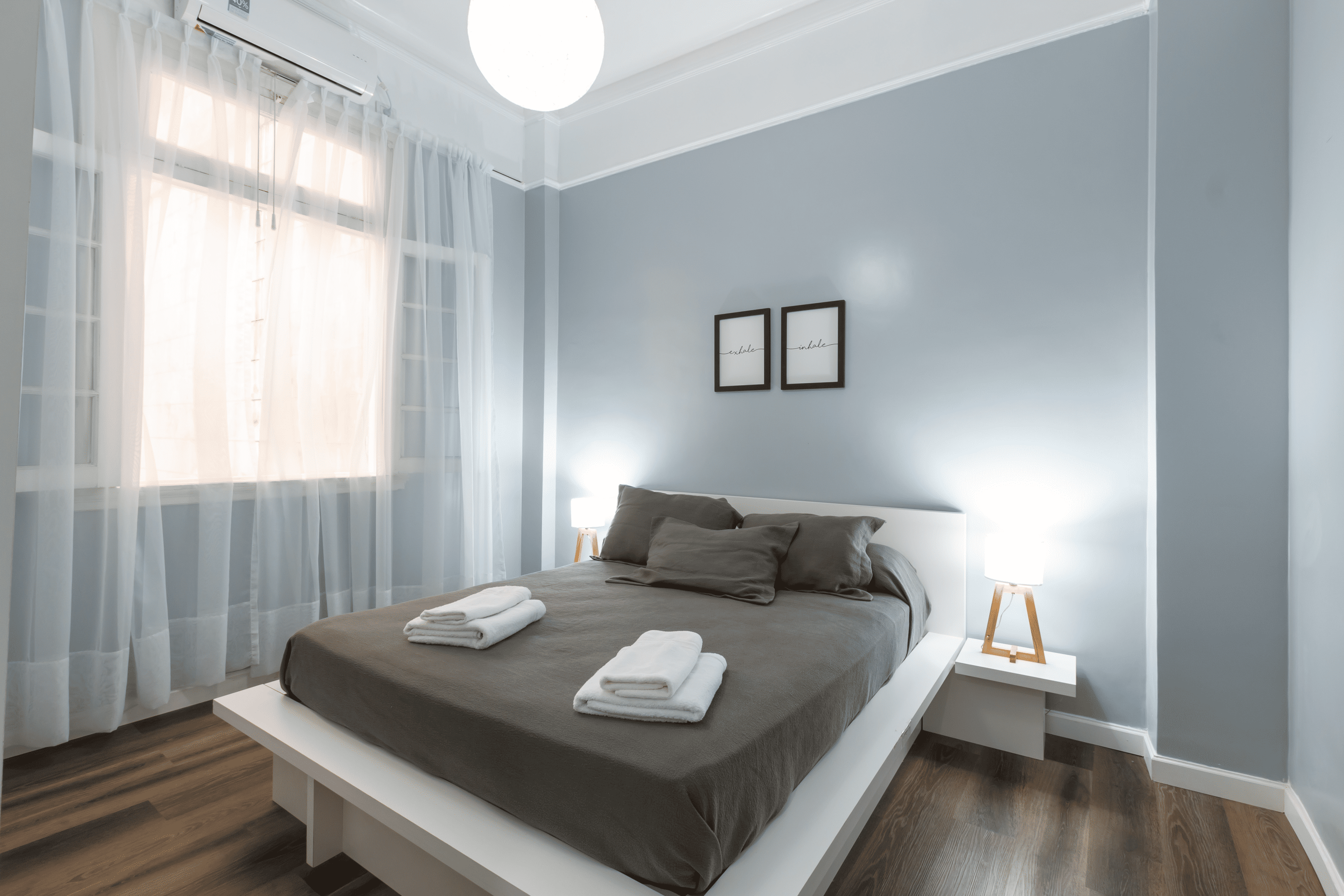
Laminate flooring is a popular bedroom choice due to its durability, affordability, and aesthetic appeal. It offers a range of options that suit different styles and preferences.
Types of Laminate Flooring
- Traditional Laminate Flooring: This type of laminate flooring consists of a high-density fiberboard (HDF) core with a photographic layer that replicates the look of natural materials such as wood or stone.
- Engineered Laminate Flooring: Engineered laminate flooring has a genuine wood veneer layer on top of the HDF core, giving it a more authentic appearance.
Pros:
Cons:
5. Tile Flooring
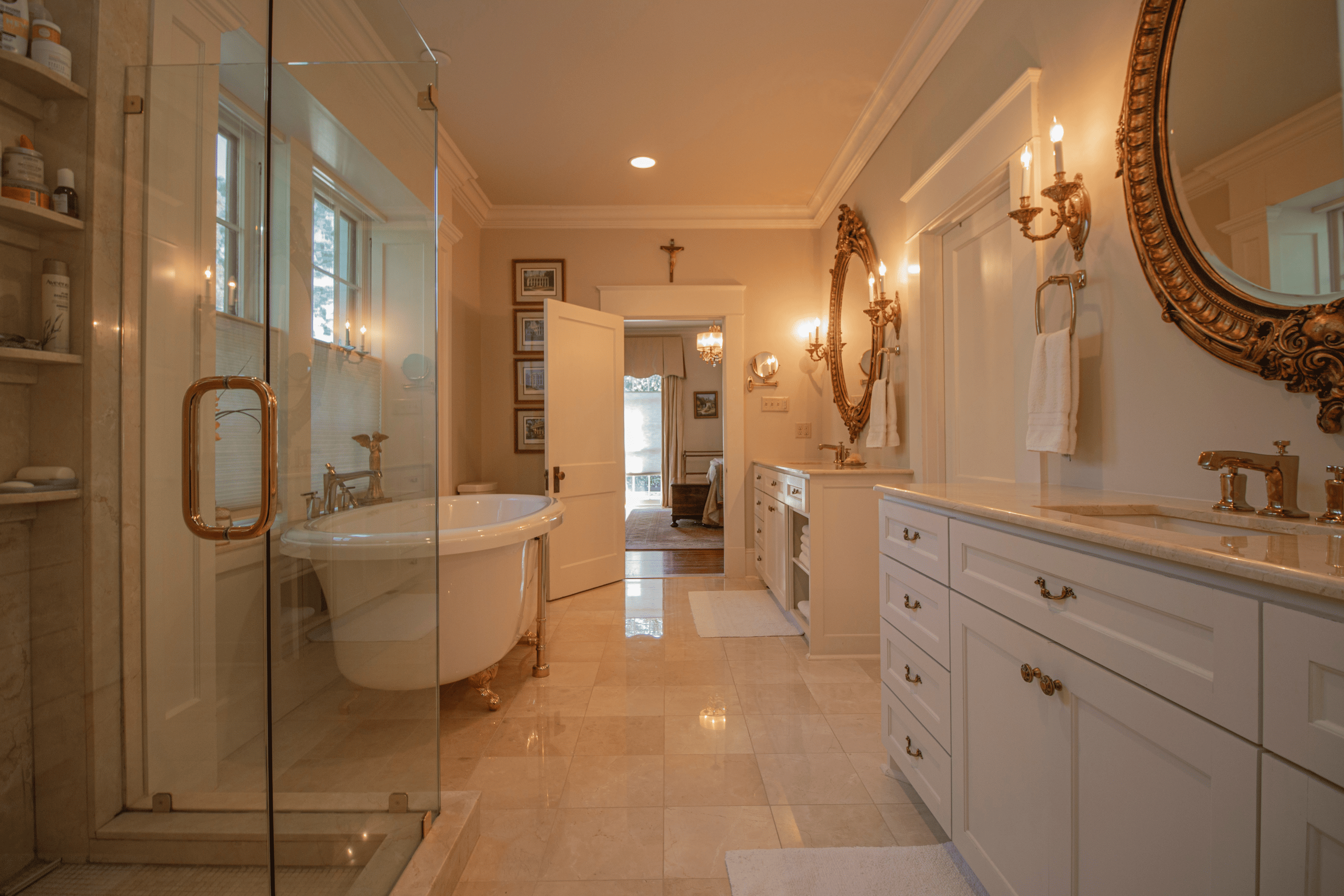
Tile flooring can be an excellent choice for a bedroom due to its durability, versatility, and aesthetic appeal. Light-colored tiles can make the space more open and airy, while darker tiles create a cozy and intimate atmosphere.
Additionally, selecting textured or matte finish tiles can help prevent slips and falls. Porcelain and ceramic tiles are generally the most popular and practical choices for bedroom flooring, offering various design options to suit various preferences.
Types of Tile Flooring
- Ceramic Tile: They are made from clay and other natural materials, are relatively affordable, easy to clean, and resistant to most scratches and stains.
- Porcelain Tile: Porcelain tiles are also made from clay but are denser and more durable than ceramic tiles. They are highly resistant to moisture, making them suitable for bedrooms.
- Natural Stone Tile: Natural stone tiles, like marble, granite, travertine, and slate, provide a luxurious and timeless look to the bedroom. Each stone has unique characteristics and veining patterns, offering a distinctive aesthetic appeal.
- Cork Tile: Cork tiles are an eco-friendly option as they are made from the bark of cork oak trees and offer natural insulation and sound absorption properties. They have comfortable underfoot and are resistant to mold, mildew, and pests.
Pros:
Cons:
Other Types of Bedroom Flooring
1. Cork Flooring
Cork flooring is a unique and also an eco-friendly option for bedroom flooring. Made from a bark of a cork oak tree, this flooring offers a soft and comfortable feel underfoot. It provides excellent insulation, reducing noise and maintaining a warm temperature in the room.
Cork flooring is also moisture-resistant, making it suitable for bedrooms with potential humidity issues. Its natural look and various color options add warmth and elegance to any bedroom decor.
2. Bamboo Flooring
Bamboo flooring has become a sustainable and durable choice for bedroom flooring. As a fast-growing grass, bamboo is an environmentally friendly alternative to hardwood. Its natural grain patterns and warm tones offer a similar aesthetic appeal.
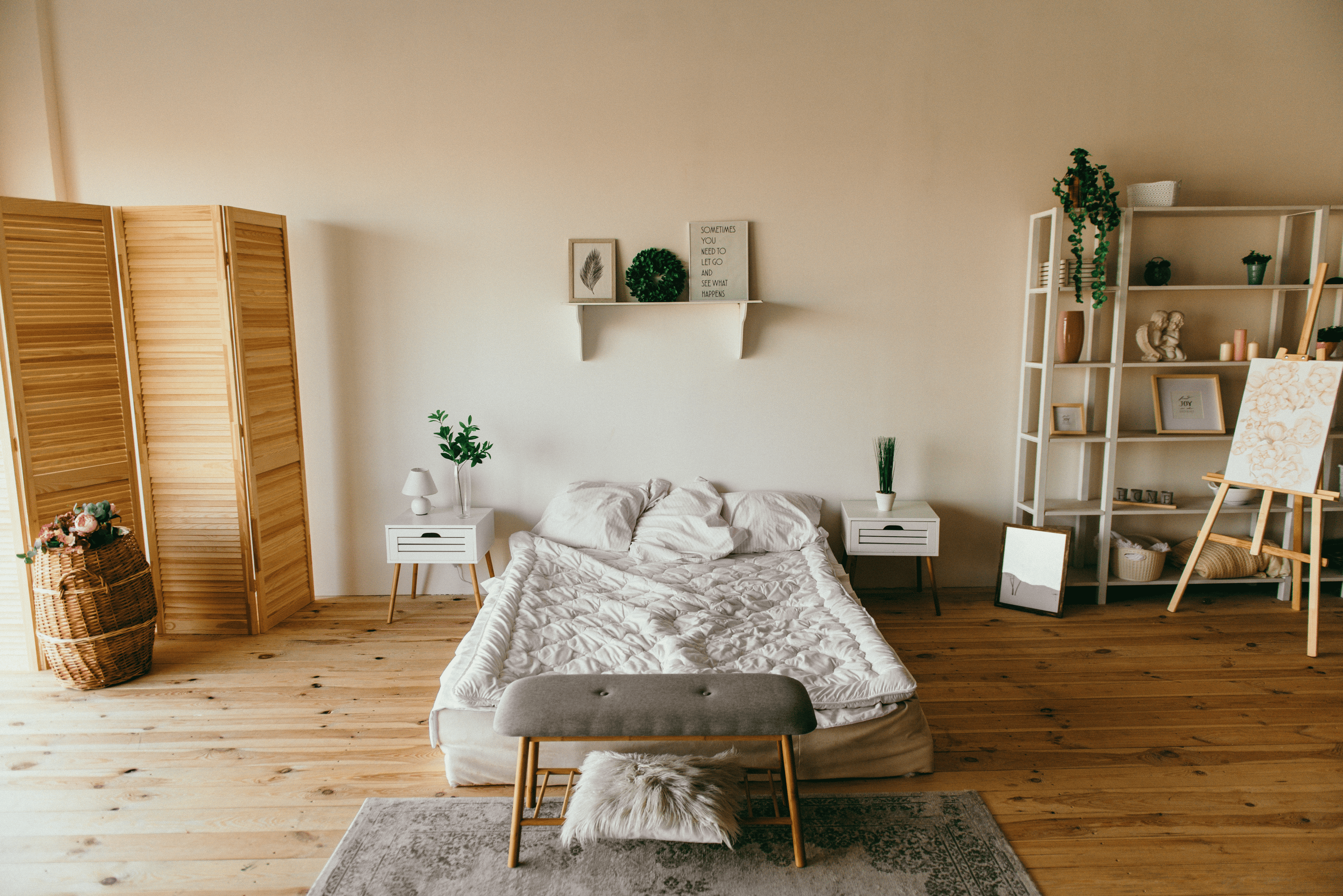
Bamboo flooring is commonly known for its strength and resilience, making it suitable for high-traffic areas of the bedroom. It is also resistant to moisture, warping, and stains, making it a practical option for bedrooms.
3. Rubber Flooring
Rubber flooring is a versatile and resilient option for bedroom floors. It is highly durable, able to withstand heavy foot traffic and resist scratches and dents. Rubber flooring also provides excellent shock absorption, making it a comfortable choice for bedrooms. It is a sound-dampening material, reducing noise and echoes in the room.
Additionally, rubber flooring is easy to clean and maintain, making it ideal for bedrooms where cleanliness is a priority. With various colors and patterns available, rubber flooring can be a vibrant addition to any bedroom design.
Factors to Consider When Picking the Best Flooring for Bedroom
1. Comfort
The bedroom is a beautiful space where you want to feel relaxed and comfortable. Therefore, choosing a flooring material that provides a pleasant underfoot feel is crucial. Softer materials like carpet, cork, or certain types of vinyl can offer a more cushioned and cozy experience. In comparison, harder materials like hardwood or tile may require rugs or underlays to enhance comfort.
2. Durability
Since the bedroom is a low-traffic area compared to other parts of the house, durability may not be the highest priority. However, selecting a flooring option that can withstand everyday wear and tear is still important. Consider the quality and strength of the material, especially if you have pets or anticipate heavy foot traffic in your bedroom.
3. Aesthetics
The flooring you choose should complement your bedroom's overall design and style. Consider the existing decor, color scheme, and furniture to ensure the flooring material enhances the room's visual appeal. A hardwood floor can be an excellent choice for a classic and timeless look, while carpet or laminate offers a cozy and versatile feel.
4. Maintenance
Different flooring materials have varying maintenance requirements. Some may require regular vacuuming, sweeping, or mopping, while others require occasional refinishing or specialized cleaning.
When deciding, consider your lifestyle, available time, and willingness to maintain the flooring. If you prefer low-maintenance options, laminate or vinyl flooring may be suitable, while carpet or hardwood floors may require more care.
5. Allergies and Health
If you or your family members have allergies or respiratory issues, it's important to choose a flooring material that minimizes allergens and is easy to clean. Carpet can trap dust and allergens, so hardwood, laminate, or tile flooring may be better options as they are less likely to harbor allergens and can be easily cleaned.
6. Noise Reduction
Bedrooms should provide a peaceful, quiet environment for restful sleep. Consider the noise reduction properties of different flooring materials. Carpet is known for its sound-absorbing qualities, which can help reduce noise levels. Alternatively, adding area rugs or using soundproof underlays can mitigate noise on hard floors like hardwood or tile.
7. Climate and Temperature
Climate can influence the choice of bedroom flooring. In colder regions, carpet or cork can provide insulation and a warmer underfoot feel. Materials like tile or engineered hardwood can help keep the room cool in warmer climates. Additionally, if you have underfloor heating, not all flooring materials are compatible, so consider this aspect.
8. Budget
Your budget is a critical factor when choosing bedroom flooring. Different materials have varying costs, and the size of your bedroom will also impact the overall expense. Set a realistic budget and explore flooring options within that range. Remember to consider the long-term value and durability of the material to make an informed decision.
Conclusion
Throughout this guide, we have explored various types of bedroom flooring, considering factors such as comfort, durability, aesthetics, maintenance, and cost. It is important to assess your needs, considering factors like allergies, noise reduction, underfloor heating, and pets. Factors such as climate, lifestyle, and budget should also influence your choice.
By considering these aspects and weighing the pros and cons of the flooring options, you can make an informed decision that suits your preferences and enhances the overall ambiance of your bedroom. Remember, the best flooring for your bedroom is the one that aligns with your unique requirements and brings you joy every time you step foot into your home.
















